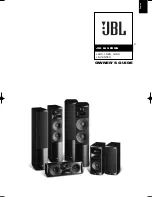
User’s Guide HDSP System Digiface
© RME
8
8. Operation and Usage
8.1 Connections
The front of the I/O-box Digiface has the second MIDI input and output, the analog stereo
output of the digital mixer, and several status LEDs:
MIDI State
indicates sent or received data separately for each MIDI port
Input State
indicates a valid input signal separately for each input. RME’s exclusive
SyncCheck
shows through a blinking LED, which of the input signals is locked, but not in sync
to the others. See chapter 9.2, Clock Modes - Synchronisation.
The red
HOST
LED lights up when the power supply or the computer is switched on, this
signalling the presence of operating voltage. At the same time it operates as Error LED, in case
the I/O-box wasn’t initialised, or the connection to the interface has been interrupted (cable not
connected etc.).
Phones
is a low impedance line output of highest quality, which can produce a sufficient
volume undistorted even in connected headphones.
The back of the Digiface has the first MIDI input and output, the power supply connector
AUX
(only needed with CardBus operation), and all digital inputs and outputs:
ADAT I/O
(TOSLINK), 1 to 3. The ADAT1 I/O can also be used for optical SPDIF, if this mode
is selected in the Settings dialog.
SPDIF I/O
coaxial (phono)
Wordclock
I/O (BNC)
ADAT Sync In
(D-sub 9-pin)
The SPDIF inputs are selected via the Settings dialog (started by clicking on the hammer
symbol in the system tray). The HDSP system accepts the commonly used digital audio
formats, SPDIF as well as AES/EBU. Channel status and copy protection are ignored.
In SPDIF mode, identical signals are available at both the optical and the coaxial outputs. An
obvious use for this would be simply connecting two devices, i.e. using the HDSP as a splitter
(distribution 1 on 2).
To receive signals in AES/EBU format,
an adapter cable is required. Pins 2 and 3
of a XLR plug are connected individually
to the two pins of a phono plug. The
cable shielding is only connected to pin 1
of the XLR - not to the phono plug.
The ground-free design using transformers for digital inputs and outputs enables trouble-free
connection even to AES/EBU devices, and perfect hum rejection.









































